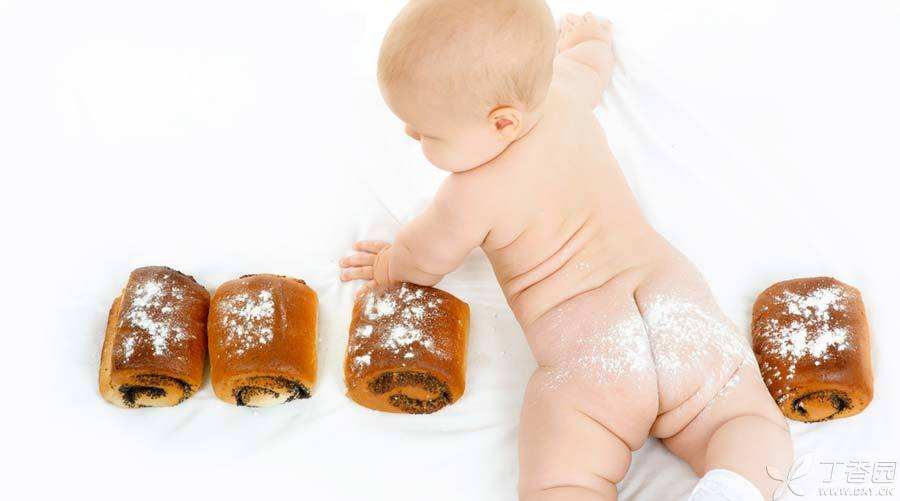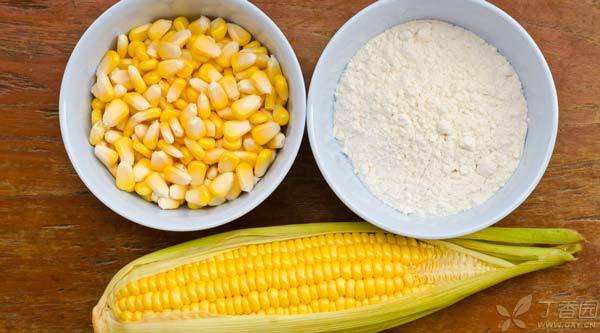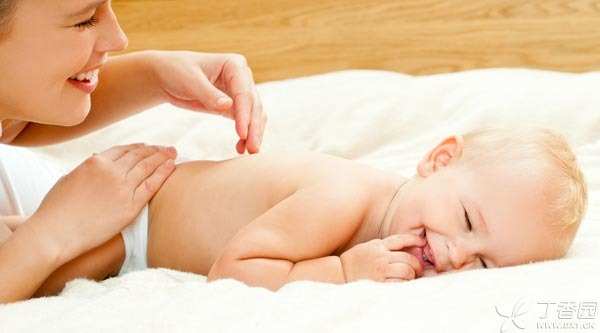
The weather is getting hot, and it is the season of high incidence of baby skin diseases such as prickly heat and diaper rash. At this time of year, mothers have to buy baby powder, prickly heat powder and other necessary supplies for their babies.
However, there have been many rumors about the bad baby powder recently. Including respiratory tract diseases, pore blockage, lead poisoning, and even cancer. Outpatient clinics also often have mothers who come to ask [whether talcum powder can be used in the end], some mothers have reached the point of [turning pale at the mention of talcum powder], and some families even have conflicts because they want to use talcum powder for their children.
Can talcum powder, which has been used for decades, really not be used?
Can talcum powder cause cancer?
The main ingredient of traditional talcum powder is talcum powder, and prickly heat powder is talcum powder added with prickly heat removing and antipruritic ingredients.
1. Carcinogenic risk if contaminated by asbestos
Talc is one of the natural minerals, In the natural form is often contaminated by asbestos, processing unqualified talcum powder may contain a small amount of asbestos components, and asbestos has been identified by the International Cancer Research Center as carcinogenic substances, may lead to asbestosis, lung cancer and other diseases. Asbestos into the human body is mainly through respiratory tract inhalation, can also be through skin contact or oral intake.
However, most people do not get sick from exposure to asbestos. It usually takes long-term inhalation of high concentration asbestos fiber to get sick, and if only short-term exposure to low concentration asbestos fiber, the possibility of getting sick is very small.
Besides, talcum powder is made of strictly tested medical talcum powder, and the qualified products do not contain asbestos, so as long as they are purchased through regular channels, there is no need to worry too much.
2. Ovarian cancer risk is inconclusive,
There is also a carcinogenic theory that talcum powder and other fine particles in talcum powder will enter the ovary through the vagina, thus causing ovarian canceration. Up to now, international research conclusions are inconsistent, and it is still uncertain whether talcum powder (without asbestos) as the main raw material talcum powder will increase the risk of ovarian cancer.
However, from the actual situation analysis, this possibility is very small.
The adhesion ability between talcum powder itself and skin is very poor. Most talcum powder applied to skin will fall off quickly, and the amount that can enter the vagina is even less. If powder is not applied to the external genitals, it is even more impossible to enter the vagina.

Can talcum powder cause lead poisoning?
Talcum powder that is not purified enough may contain a small amount of residual lead, but talcum powder that meets the standard of < < Cosmetic Hygiene Standard > > does not contain lead.
However, because lead has a better therapeutic effect on skin diseases such as carbuncle and gangrene, some manufacturers will add lead powder to talcum powder, which can be used for adults and is not recommended for children. Moreover, lead powder has different aliases in commodities, such as lead China, official powder, palace powder, lead white powder, Hu powder, etc. When purchasing talcum powder and prickly heat powder, mothers should pay attention to whether the instructions contain the above ingredients and try to avoid such products.
Can talcum powder be inhaled by the baby to cause disease?
Because the infant’s respiratory tract development is not perfect, the inhaled dust may invade the bronchus and affect the movement of cilia, which will reduce the defense force, easily induce respiratory tract infection, and may also induce allergic asthma and other diseases. Therefore, the inhalation of dust should be minimized.
However, generally speaking, the particle size of qualified talcum powder is appropriate to avoid excessive grinding and is not as fine as it is easy to inhale into respiratory tract alveoli. At the same time, when using talcum powder for babies, pay attention to keeping away from nose and mouth or covering nose and mouth with hands, which can also greatly reduce the risk of dust being inhaled into the lungs by babies.
Can talcum powder block pores?
Because talcum powder has poor skin adhesion, It is mainly adhered to the skin surface by water and grease. The diameter of talcum powder particles conforming to the production specifications is larger than the pore diameter. Can’t enter the pores, when the skin is clean and dry, it will not block the pores. However, if there is more water, sweat, secretions, etc. on the local skin surface, talcum powder will form moist particles to adhere to the skin, which may block the pores.
Do you want to use talcum powder?
Qualified talcum powder is relatively safe for babies, so can it be used at will?
1. Toilet powder does not need to be used routinely.
For babies, It is most important to keep the skin clean and dry and avoid the environment where bacteria breed. As long as the skin at the wrinkles of the baby is kept clean and dry, prickly heat and diaper rash can be prevented. After each bath, dry the skin completely, especially at the wrinkles of the neck, armpits, thigh grooves and other parts, and then use baby moisturizer appropriately to protect the skin.
After bathing the baby, many parents often like to rub some talcum powder on the baby’s small buttocks, armpits or thigh roots and other body folds, believing that this can protect the baby’s skin. In fact, it is not necessary.
2. The wrong use of talcum powder does more harm.
In fact, the sebum of infants is itself a good protective layer. The skin metabolism is very fast, the skin temperature is relatively high, it is easy to sweat and urinate frequently.
Excessive talcum powder will form lumps or granules when encountering sweat or urine, blocking pores and affecting skin breathing.
When the baby moves, the powder or particles at the wrinkles rub against the delicate skin, which easily causes local skin redness, swelling and erosion.
Corn flour talcum powder will also become a hotbed for bacteria after being wet.
These will increase the risk of skin damage and even induce or aggravate skin diseases such as prickly heat and diaper rash.
Authoritative organizations such as the American Academy of Pediatrics (AAP) do not advocate the routine use of talcum powder for infants.

3. When do you need to use talcum powder?
The function of talcum powder is mainly to absorb excess water on the baby’s skin surface.
Baby’s skin is extremely delicate. If it is wet for a long time, it will easily lead to bacteria and fungi breeding and damage the skin barrier function. If the baby’s neck, buttocks, armpits and other parts have flushing and moist manifestations, talcum powder can be used to help the skin keep dry at this time.
However, it is not necessary to pat a large amount of talcum powder to keep the skin dry, but to dry the skin with a soft cotton towel after cleaning, and then apply talcum powder to further dry the skin. The best dry state is to gently pat the powder after applying talcum powder and drop it. If there is a large amount of talcum powder remaining on the skin, it means that the skin has not been dried.
4. Be careful when using corn talcum powder.
Due to everyone’s fear of talcum powder, the birth of a new generation of baby talcum powder represented by corn talcum powder has also been promoted. If mothers are really not at ease, they can choose corn talcum powder without talcum powder, and at the same time, they can pay attention to avoiding the vulva when powdering female babies.
However, if the baby already has diaper rash or prickly heat, in order to prevent corn flour from becoming fungal ingredients and hotbeds, it is recommended not to use talcum powder with corn flour as raw material, otherwise it may aggravate or induce infection.
How to use talcum powder correctly?
-
Lead-free talcum powder produced by regular manufacturers should be selected.
-
Only used in places with flushing and moist manifestations, and cannot be smeared all over the body.
-
The skin is completely dried before powdering.
-
Don’t use powder puff, directly dip your hand in powder and apply it to the baby, and only apply a thin layer.
-
Avoid using talcum powder in windy places and act gently when applying powder.
-
When using, try to block the baby’s face and avoid nose and mouth.
-
If the baby’s skin has been eroded and exuded, stop using talcum powder immediately and seek help from a doctor in time.
-
Put talcum powder out of the reach of the child, so as not to inhale the powder due to accidental spilling when the child plays with it.
-
If diaper rash occurs, do not use corn powder either.
-
Do not use it for babies with high risk of respiratory diseases, including premature infants, children with congenital heart diseases and children with respiratory diseases. Vegetable oil can be applied to flushed parts to isolate water and protect skin.
Responsible Editor: Xiaoyan
This article is exclusively authorized to be used by Clove Garden and refuses any other form of reprinting.
